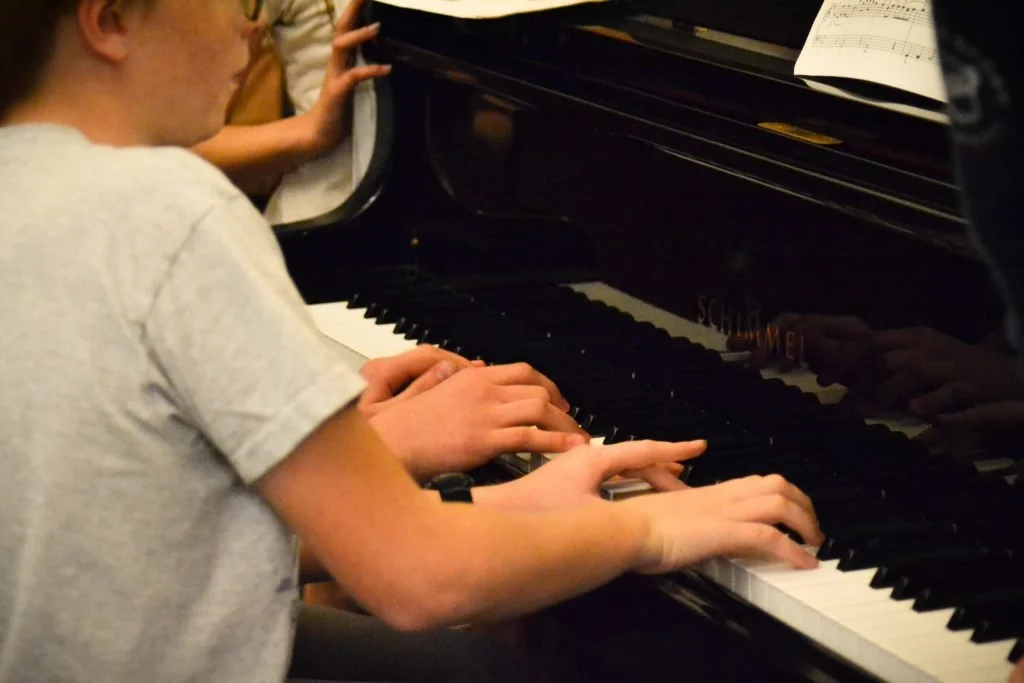Movable Do
I should start with a disclaimer:
I love the French. I love France, a country my husband and I have taken several romantic trips over the years. I love French food (I mean, who doesn’t love a diet whose core consists of baguettes and cheese, chocolate and wine?). I have a French brother-in-law, which means my adorable (and I say that without any bias whatsoever) six-year-old nephew Felix is half-French. I am, in every sense of the word, pro-French.
But some years ago when I was teaching at a community music school in Boston, I was assigned two little girls, sisters, whose mother was French. The girls were quite cute, and the mother seemed friendly enough, if maybe a bit overbearing. The first few weeks of lessons with the girls proceeded in a predictable manner: lots of playing rote pieces, identifying finger numbers, and distinguishing which hand was left and which was right. We learned the names of the notes on the piano by turning the keyboard into a “Piano Town” full of big houses with three windows and “Front doors” and “Back doors” (F and B) and funny dog houses (D) that were guarded on either side by a Cat and an Elephant (Learning C and E always caused a great amount of giggling.). The big houses had garages (G), of course, because this is America and we love our cars. Living in the big houses was Miss Amy (A) who peered out of one of the windows in the drawings of Piano Town we sketched in the girls’ practice notebooks. As far as I was concerned, the children’s piano lessons were going just swimmingly.
Then one day, the mother came into my studio. She was livid. It was immediately clear that I was in trouble and was about to hear about it. “You are teaching my girls wrong,” she said. “There is no Do-Re-Mi.”
I stared at her, wondering if I had been cast in a musical without my knowledge or permission. Do-Re-Mi? (And honestly, what was there to be so worked up about anyway? As my friend Lora was fond of saying, these were piano lessons. No one was bleeding from the head.)
Then it hit me. This woman knew nothing about music or about piano pedagogy, but growing up in France, she had heard about Do-Re-Mi, the solfege system used in Europe. She didn’t understand the charms of my invented Piano Town, she wanted Do-Re-Mi.
Well, I thought, I can fool her. She wanted Do-Re-Mi, she could have Do-Re-Mi. From that moment on I began writing the girls’ Five-Finger Position exercises in their notebooks in solfege. Using Pentachords was nothing new to my pedagogical method, but up to that point, I had limped along with a fairly awkward system of writing down the patterns using finger numbers. This was problematic because it meant writing down one set of fingers for the right hand and one for the left hand, so I quickly saw the benefits of notating patterns in solfege. Whereas I had once written something like RH: 1-2-3-4-5-4-3-2-1, LH: 5-4-3-2-1-2-3-4-5 to indicate a basic pattern, now I could simply write: Do-Re-Mi-Fa-Sol-Fa-Mi-Re-Do. What the French mama didn’t understand was that I wasn’t using the French Fixed-Do solfege. I was using Movable Do. I figured what she didn’t know wouldn’t hurt her.
Amazed at how naturally her two girls picked up the solfege, I immediately began using Movable Do with all my students, thrilled at how much easier it made my job notating Five-Finger Positions. We kept our Piano Town, of course, and always used letter names to identify notes in the music or on the keyboard, but solfege became my new language when teaching technical exercises.
And that angry French mother? Mère never had another complaint.
Simply working with dynamics and articulations offers countless options for Five-Finger Positions, but using solfege patterns provide even more variations. Here are a dozen. If you mix and match them with various dynamics and articulations, the variations multiply exponentially.
Do Re Mi Fa Sol Fa Mi Re Do Do Do.
Do Do Re Re Mi Mi Fa Fa Sol Sol Fa Fa Mi Mi Re Re Do Do.
Do Re Mi. Do Re Mi. Do Re Mi Fa Sol Fa Mi Re Do.
Do Re Mi Fa Sol. Do Re Mi Fa Sol. Do Re Mi Fa Sol Fa Mi Re Do.
Do Re Mi. Do Re Mi. Do Re Mi Fa Sol.Sol Fa Mi. Sol Fa Mi. Sol Fa Mi Re Do.
Do Re Mi Re Do. Do Re Mi Re Do. Do Re Mi Fa Sol Fa Mi Re Do.
Do Re Mi Fa Sol Fa Mi Re Do Re Do.
Do Re Mi Fa Sol Fa Mi Re Do Mi Do.
Do Re Mi Fa Sol Fa Mi Re Do Sol Do.
Do Re Mi Fa Sol Fa Mi Re Do Mi Sol Mi Do.
Do Re Do Re. Mi Fa Mi Fa. Sol Fa Sol Fa. Mi Re Mi Re Do.
Do Mi Do Mi . Re Fa Re Fa. Mi Sol Mi Sol. Sol Mi Sol Mi. Fa Re Fa Re. Mi Do Mi Do.
